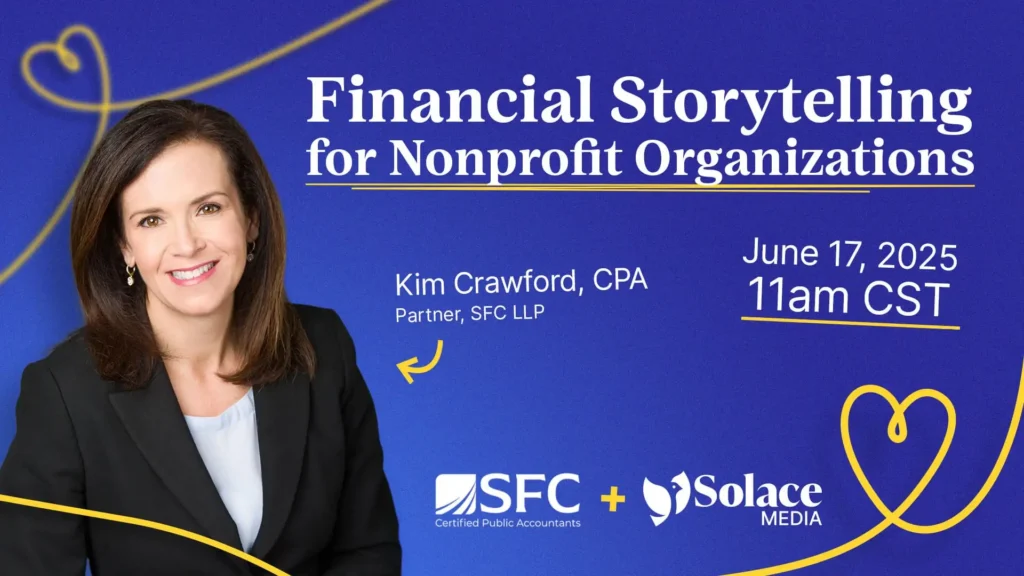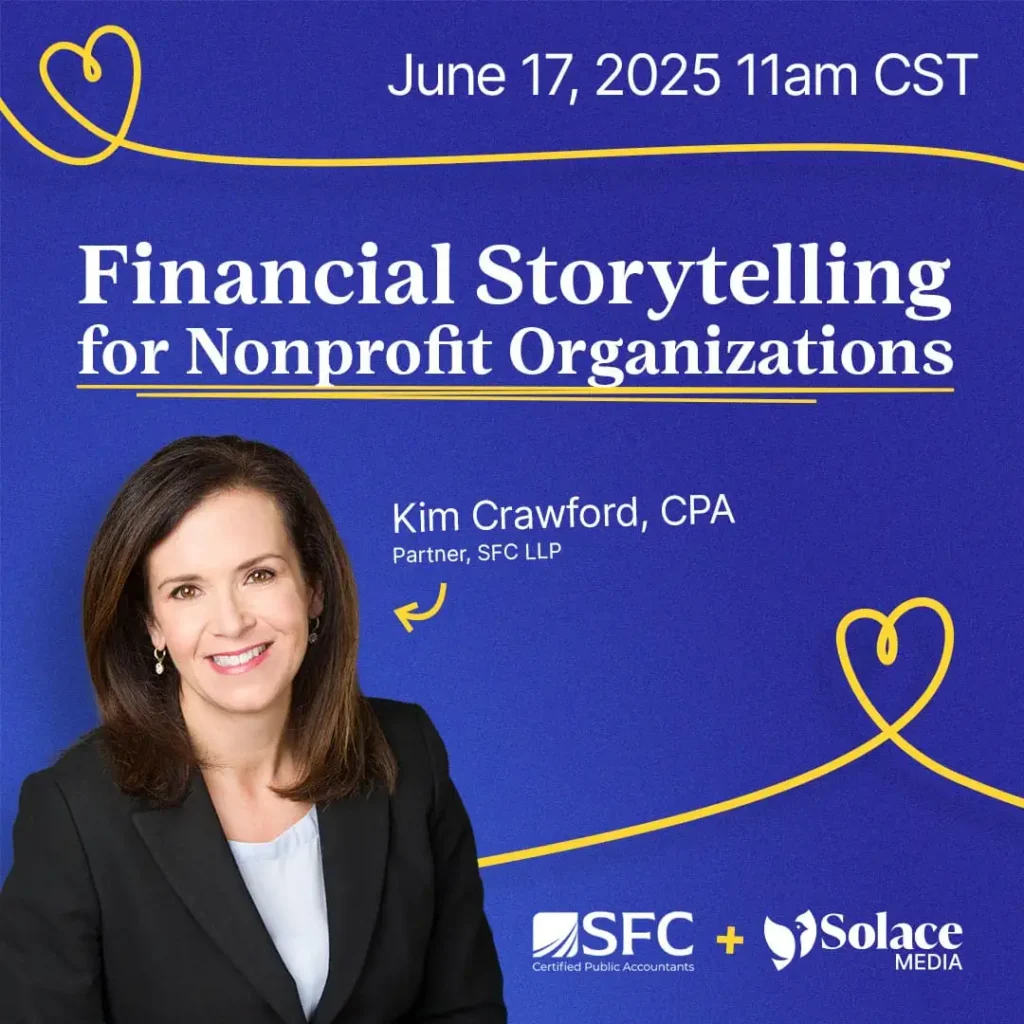Fundraising campaigns can seem daunting, but they don’t have to be. You can run a campaign that yields results and is doable for your nonprofit.
The other day we were on a client call when, Natasha – Co-Founder of Solace Media and former Interim Executive Director of Fuller Life, couldn’t contain her excitement about a Monthly Giving Campaign she’d just wrapped up with Fuller Life Family Therapy Institute, a nonprofit that trains therapists to become confident, effective clinicians while providing affordable therapy on a sliding scale. Although we did not build their website, our campaign partnership was extremely successful!
Get this: Fuller Life started with only 2 monthly donors. After their GEMs campaign this summer, they exceeded their goal of 25 new monthly donors by 48%! I knew immediately that we had to share the insights of what they did with all of you.
So, I sat down with Natasha and picked her brain. “What worked? What didn’t? What surprised you?” I asked. And let me tell you, the strategies she shared are not hard, but make you go “that totally makes sense!”
Whether you’re planning an annual giving drive, a capital campaign, or your own monthly donor push, these approaches can work for you. They’re practical, tested, and most importantly, doable for any nonprofit.
Grab a cup of coffee and let me walk you through the 7 practical tips Natasha and Dr. Amy Fuller (Founder of Fuller Life Family Therapy Institute) used to knock this campaign out of the park:

1. Set Clear, Ambitious yet Realistic Goals
Fuller Life started with just two monthly givers. They set a goal of 25 monthly donors in three months – ambitious, but achievable. This SMART (Specific, Measurable, Attainable, Relevant, Time-bound) goal gave them a clear target to work towards.
Pro Tip: Always tie your campaign to a specific goal. People want to hear exactly what you’re aiming for, not just that “anything helps.”

2. Foster a Community of Givers
Fuller Life invited donors into a community where they could feel they are part of something much bigger than themselves. Donors needed to feel they’re not alone in this mission to provide affordable therapy, but together they are stronger. This community gets access to exclusive insider updates.
Real-Word Example: Fuller Life named their monthly giving community GEMs (Give Every Month Supporter), created a landing page for it on their website and explained how anyone can give meaningfully for mental health by Giving Every Month.

3. Create a Strong Campaign Kickoff
Fuller Life launched with an open house, giving people a tangible experience of their mission. Instead of just reading about them online, supporters could see and hear firsthand how they train their therapists and provide high quality therapy.
Practical Advice: Consider allowing people to bring their kids and have activities for them. Fuller Life included raffle prizes, giveaways, and breakfast (that was donated by Torchy’s Tacos!) to make it more engaging.

4. Craft a Compelling Campaign Message
Fuller Life tied their campaign to stories of individuals and couples who experienced their services. This storytelling approach helps create an emotional connection with potential donors. To respect privacy, they used composite stories instead of an individual story, which still shares the true narratives of what their clients have experienced, while also maintaining confidentiality.
Key Point: Your message should clearly explain the purpose of your campaign and how the funds will advance your mission. Think of it as the cover of an incredible book – it needs to entice people to open it!

5. Leverage Multiple Communication Channels
Fuller Life used a mix of social media, emails, and texts to share their progress throughout the campaign. This multichannel approach helped them reach more people and keep the momentum going.
Crucial Insider Tip: Make it easy for your team members and current donors to share the campaign across these channels. Create templated messages for each platform (text messages, email content, and social media posts) that they can easily copy and paste. Then remind everyone when it’s time to send them. This dramatically increases the likelihood of them spreading the word consistently. Oh, also – send the templates in the platform they’re going to use. This works especially well if you have a small team. Eg. Send text templates via a group text so your team can easily copy and paste that text to their friends/family.
Examples: “Tomorrow is the last day to give. If you didn’t get a chance, you can give here!” Or, “We need one more donor, will you consider being the last one?” Dr. Fuller did this at Fuller Life the day before the campaign ended and got 12 more donors!

6. Activate Personal Connections
Fuller Life involved their entire team in the campaign, asking them to reach out personally to potential donors. They also engaged their current donor base, asking them to spread the word.
Lesson Learned: People are often hesitant to ask for donations, but personal connections can be incredibly effective. Encourage your team and loyal supporters to share why they’re passionate about your cause. Provide them with key talking points, a script they can adapt and campaign details, but let them use their own voice and share their personal stories. This authenticity can be far more compelling than an email from the organization (which still needs to be sent!).

7. Show Progress and Express Gratitude
Throughout the campaign, Fuller Life regularly announced their progress. “We’re at 16… now 20…” This created excitement and made people want to be part of achieving the goal.
Don’t Forget: Always tell everyone where you landed when the goal is over. People want to know the impact they helped create!

The Result? Fuller Life aimed for 25 new monthly donors and ended up with 37! Natasha was incredibly proud of Fuller Life Founder, Dr. Amy Fuller, for overcoming her hesitations and reaching out to her friends and family – giving the campaign the boost it needed!
Remember, fundraising campaigns are not just about asking for money – they’re an opportunity to share your impact and invite others to be part of your mission.
By the way, need therapy for your team or clients? Visit Fuller’s Partnership page for more information.


